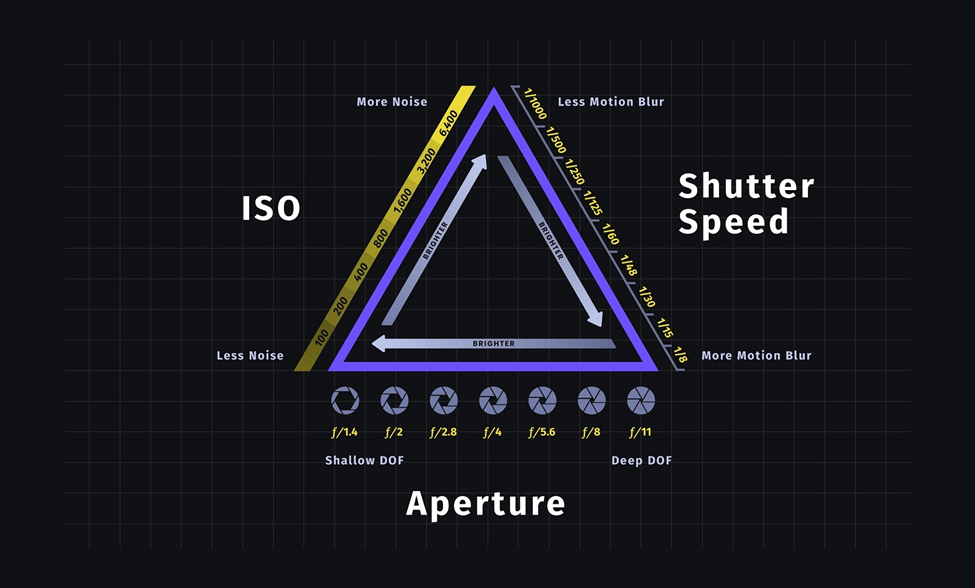The Exposure Triangle
The Exposure Triangle
Photographers and videographers must understand the relationship between three things in order to control the camera and set the exposure intentionally.
- ISO - how sensitive the light sensor will be to light
- f-stop/aperture - how much light is allowed to pass through the lens iris
- Shutter speed - how long the shutter is left open before it closes to cut off incoming light
An adjustment to any one of these settings will impact the final exposure of the image. It is up to the photographer/videographer to set all three in balance, to achieve the desired depth of field, motion blur, and exposure.
ISO
The International Organization for Standardization (ISO... because it is technically not an acronym) established a numerical scale to rate how sensitive different kinds of film were to light. This scale was retained for digital cameras.
When you change the ISO value on a DSLR, you can think of it as swapping out a physical roll of film to a type that is more sensitive or less sensitive to light compared to what is currently in the camera. One big advantage of a digital camera is that you can change the ISO from shot to shot, instead of only per roll of film.
This video shows how to set ISO on the Canon E0S 5D Mk IV.
Higher ISO numbers are more suitable for dark environments but make the image grainier.
Lower ISO numbers are more suitable for bright environments and the image will usually be less grainy.
ISO 100: Suitable for a bright, sunny day
ISO 800: Suitable for indoor spaces when not using a flash
ISO 1600+: Suitable for dim or dark environments (but the picture will probably be grainy looking)

